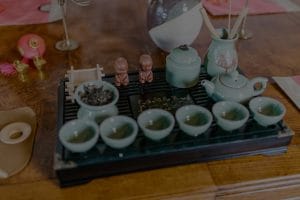**Abstract**: Discover how feng shui ornaments can transform your living room into a harmonious space. This guide explores the art of balance and energy flow, enhancing both aesthetics and well-being.
Understanding Feng Shui: The Art of Energy Flow
Feng Shui, an ancient Chinese practice, emphasizes the importance of energy flow in our living spaces. The arrangement of furniture, the choice of colors, and the inclusion of specific ornaments can significantly influence the ambiance and emotional well-being of a room. In Western cultures, where the pace of life is often frenetic, creating a sanctuary at home has become essential. By understanding the principles of feng shui, individuals can cultivate an environment that promotes relaxation, focus, and positivity. This is particularly relevant in the living room, a central space for family gatherings and personal reflection.
The Role of Ornaments in Feng Shui
Feng shui ornaments serve as powerful tools to channel energy effectively. These items—such as crystals, statues, and wind chimes—are not merely decorative; they are imbued with meaning and purpose. For instance, crystals are believed to absorb negative energy and promote clarity, while certain symbols, like the laughing Buddha, attract abundance and joy. The strategic placement of these ornaments can enhance the energy flow, creating a balanced atmosphere that resonates with the inhabitants. Understanding the significance of each ornament allows individuals to make informed choices that align with their personal aspirations and emotional needs.
Selecting the Right Ornaments for Your Space
When selecting feng shui ornaments for your living room, consider both aesthetics and functionality. Choose items that resonate with your personal style and evoke positive emotions. For example, a beautiful amethyst cluster can serve as a stunning centerpiece while also promoting tranquility. Additionally, consider the five elements of feng shui: wood, fire, earth, metal, and water. Incorporating these elements through colors and materials can further enhance the balance within the room. Remember, the goal is to create a space that feels inviting and harmonious, where every ornament contributes to the overall energy of the environment.
Placing Ornaments for Maximum Impact
The placement of feng shui ornaments is crucial for achieving balance. For instance, placing a mirror can amplify energy and light, but it should not reflect clutter or negative energy sources. Similarly, positioning plants in the corners of the room can help to soften sharp angles and promote vitality. It’s essential to consider the Bagua map, a feng shui tool that identifies areas of life influenced by specific sections of your space. By aligning your ornaments with these areas—such as love, health, or wealth—you can intentionally cultivate the energies you wish to attract into your life.
Maintaining Your Feng Shui Space
Creating a harmonious living room with feng shui ornaments is not a one-time effort; it requires ongoing attention and maintenance. Regularly assess your space to ensure that it continues to promote positive energy. Remove any items that no longer resonate with you or that contribute to clutter. Seasonal changes can also influence the energy of your living room; consider rotating your ornaments to reflect the current season or your evolving intentions. By maintaining a mindful approach to your space, you can ensure that it remains a sanctuary of balance and harmony.
In conclusion, feng shui ornaments are more than decorative items; they are essential tools for creating a balanced and harmonious living room. By understanding their significance, selecting the right pieces, and placing them thoughtfully, you can transform your space into a haven of peace and positive energy. Embrace the art of feng shui and watch as your living room evolves into a nurturing environment that supports your well-being and happiness.










